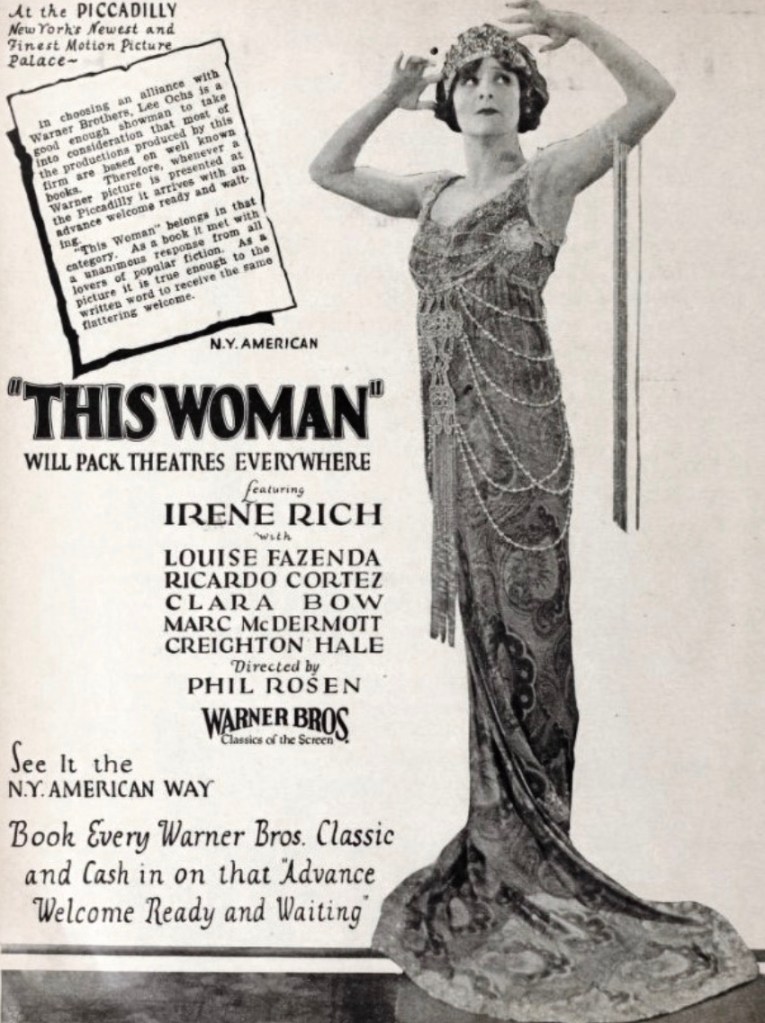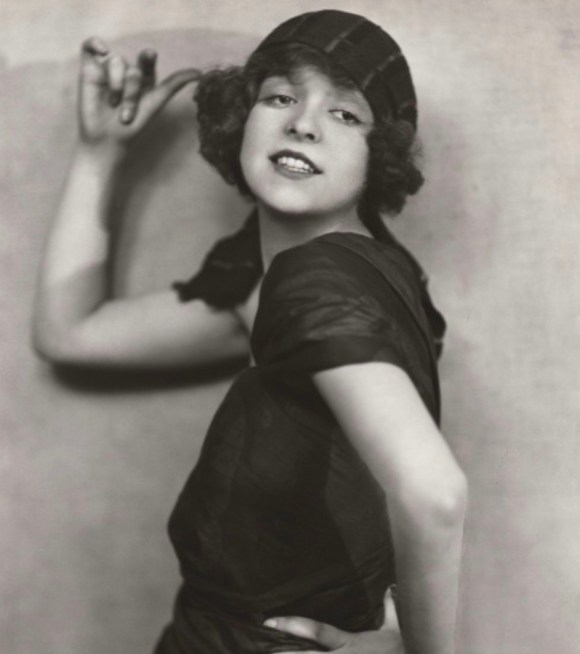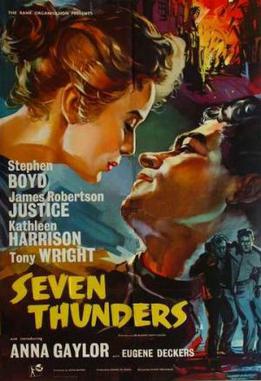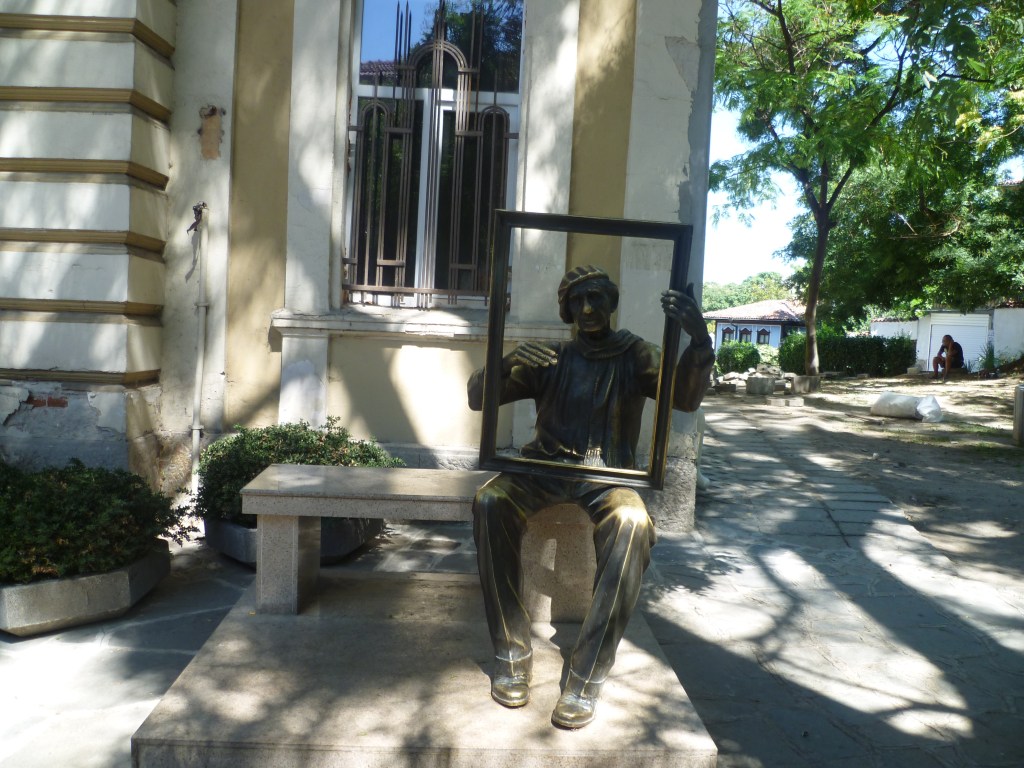Dear Reader,
Clara Bow’s thirteenth movie was This Woman, produced during the summer of 1924. This Woman went on general release from November 2, 1924. Clara was very much a ‘jobbing’ actress at this stage, appearing in bit parts. She was listed eighth (out of nine) on the bill. To add insult to injury, the New York Times miscredited her as ‘Clare Bow’.
This Woman ran for seventy minutes and was released by Warner Bros. Clara played Aline Sturdevant, a jealous young lover. The movie was considered lost, but a complete print can be found at Lobster Films, Paris.
Joan Woodbury (December 17, 1915 – February 22, 1989) enjoyed an acting career that began in the 1930s and lasted well into the 1960s. She appeared in B-movies and as the heroine opposite cowboy actors such as Roy Rogers.
Joan appeared in fifty films between 1937 and 1945. Her most memorable role arrived in 1945 when she played Daily Flash newspaper journalist Brenda Starr in the serial Brenda Starr, Reporter.
Technicolor, a series of colour motion picture processes, dates back to 1916. In the 1930s three black and white films ran through a special camera to produce Technicolor, a process that continued into the 1950s when the 3-strip camera was replaced by a standard camera loaded with a single strip ‘monopack’ colour negative film.
Technicolor’s three-colour process became famous for its highly saturated colour. Initially, the process was used for musicals, animations and costume dramas, but it also featured in film noir, in movies such as Leave Her to Heaven.
Betty Compson (March 19, 1897 – April 18, 1974) acted and produced during Hollywood’s silent era. Her notable performances included The Docks of New York and The Barker, the latter earning her an Academy Award nomination for Best Actress.
Initial success enabled Betty to establish her own production company, which gave her creative control over screenplays and financing. Unlike a number of female stars of the silent era, Betty’s voice recorded well and she extended her career into the talkies.
In common with many actresses of the era, Betty married three times: to director James Cruze; to agent/producer Irving Weinberg; and to Silvius Gall, a marriage that lasted until Gall’s death in 1962.
A Christmas present. An excellent version of The Great Gatsby.
“They were careless people, Tom and Daisy – they smashed up things and creatures and then retreated back into their money or their vast carelessness or whatever it was that kept them together, and let other people clean up the mess they had made.”

My 4 x great grandfather, Richard Morgan, was baptised on 2 December 1792 in Llantrisant, Glamorgan, the ninth of twelve children born to James Morgan and Hannah David. Sadly, Hannah died when Richard was ten. Richard’s family were associated with inns and horses, and he spent a long working life as an ostler.

At the relatively advanced age of 43, my 4 x great grandfather Richard Morgan married Margaret Jones in St James’ Church, Pyle (pictured). St James’ was originally built in the medieval town of Kenfig. However, over a period of 200 years sand encroached upon the town and, eventually, buried it. The burgesses moved their town to Pyle, c1481, where they rebuilt St James’. They rebuilt one wall ‘upside down’ using the smaller stones on the bottom as they arrived from Kenfig.
During my research, I wondered what persuaded Richard to travel twenty miles west to settle in Pyle. Then, I hit upon a theory. As an ostler, he moved there to work at Pyle Coaching Inn, the main inn on the main highway. Then, while researching the births of Richard and Margaret’s children, I discovered that Richard was listed as a horse keeper at Pyle Coaching Inn, and living in nearby Cefn Cribwr, or Tythegston Higher as it was also called. It’s lovely when your theories are confirmed in the facts.

Mail deliveries became available to the public in 1635 and the introduction of national mail coaches in 1785 further increased the traffic travelling along the highways. The ongoing war with France meant that the gentry could no longer take the ‘grand tour’ of Europe and so they looked around for alternatives, their eyes and minds soon focusing on Wales with its romantic landscapes and medieval ruins. All of this led to the building of Pyle Coaching Inn during the 1780s by Thomas Mansel Talbot of Margam.
Thomas Mansel Talbot took a private apartment at the Inn and he would stay there while indulging in his passion for hunting and fishing. He built the Inn in the fashionable Georgian style with three floors and rooms of various sizes. The largest room was five metres by four and a half metres, and the building contained forty beds and twelve double-bedded rooms. Moreover, the Inn also boasted a spacious dining room and stables for eight coaching horses. My 4 x great grandfather Richard Morgan tended those horses.
Many 18th and 19th century antiquarians who travelled through south Wales visited the buried medieval town at Kenfig and invariably they also stayed at the Inn. Furthermore, it is rumoured that Admiral Lord Nelson resided there on one occasion.
Isambard Kingdom Brunel did stay at the Inn in 1849 – 50 to oversee the construction of the south Wales leg of the Great Western Railway. Another distinguished guest was Josiah Wedgwood and it is said that he gained inspiration for some of his pottery from the colour of the rocks and pebbles on the beach at Pink Bay.
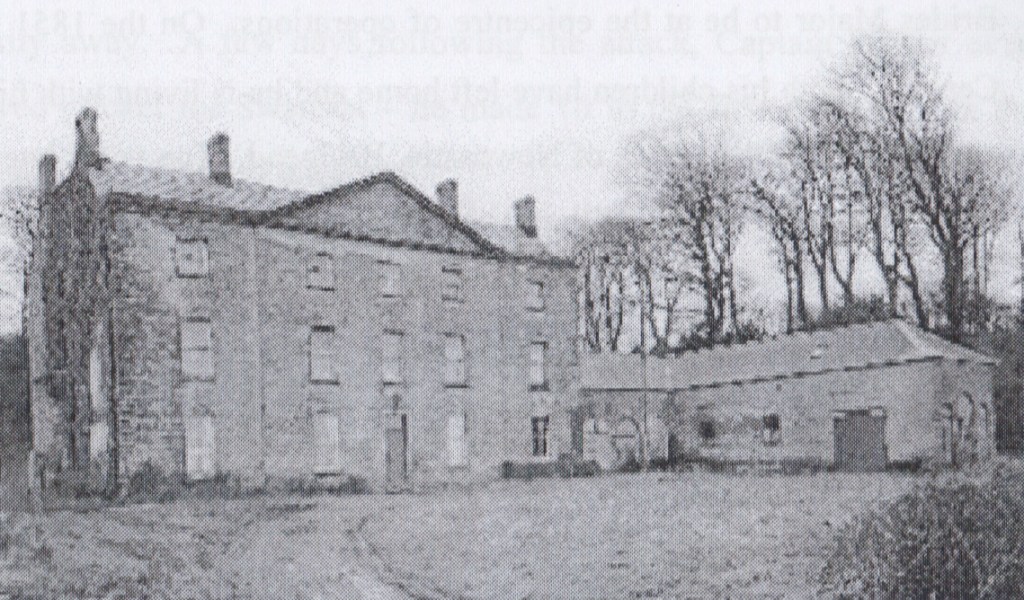
📸 Pyle Coaching Inn, c1950, shortly before demolition.
When the railways arrived in Glamorgan in the 1840s they took passenger and commercial trade away from the horse carriages. As a result, my 4 x great grandfather Richard Morgan lost his job as an ostler at Pyle Coaching Inn. However, Richard adapted. He became a colt breaker then a horse keeper. With his love and knowledge of horses, he worked with the animals for the rest of his life.
🖼 Bridgend Railway Station, the commemorative opening, 1850.
When Richard lost his job as an ostler at Pyle Coaching Inn, due to the development of the railways, his wife Margaret decided to create her own ‘inn’ where she boarded navigators who had travelled from their homes in Ireland to help construct the railways. You could say life gave her lemons, so she made lemonade.
📸 Residents of Pyle Coaching Inn, c1900.
Clara Bow Quotes: “Romance had touched lightly upon me up to this time. Of course, I met many nice boys and went to dances and to the theatre with them just as any other girl would do. But even the intimation of love was far from my thoughts. I had a career to think of.”
Intertitle #14
As ever, thank you for your interest and support.
Hannah xxx
For Authors
#1 for value with 565,000 readers, The Fussy Librarian has helped my books to reach #1 on 36 occasions.
A special offer from my publisher and the Fussy Librarian. https://authors.thefussylibrarian.com/?ref=goylake
Don’t forget to use the code goylake20 to claim your discount 🙂

